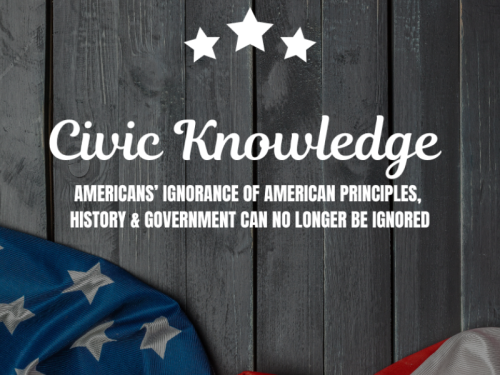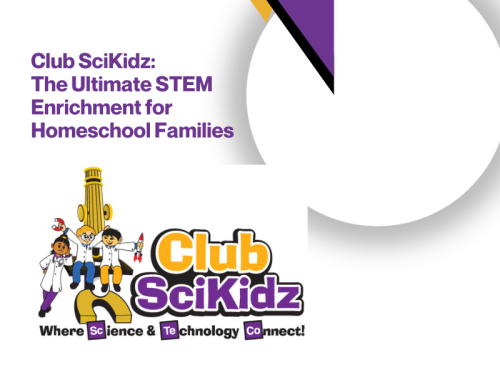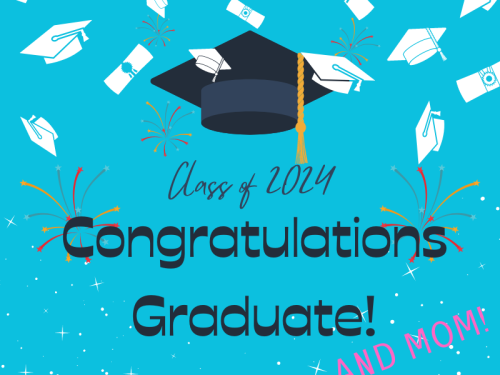by Linda Jeschofnig, M.S.
Media reports continuously bemoan the decline of science literacy in America. The US now ranks 27th among nations in high school students’ science scores. At the same time we are constantly reminded that every aspect of modern life stems from scientific advancement; that our nation’s current prosperity is the result of its prior leadership in the fields of science; and that its future prosperity is dependent upon a revival of that leadership.
Over the past four decades there has been steady erosion in the quality of science teaching in America as well as in the number of science PhDs awarded to Americans. Further, the majority of elementary and middle schools teachers trained during this period were not required to take lab science courses as part of their training. Accordingly and not surprisingly, many of those teachers subconsciously fear science and inadvertently communicate that fear to their students. Thus are many of America’s youngsters today robbed of experiencing the sheer joy and the lifelong benefits of scientific inquiry, discovery, and understanding.
To be effective, science education must actively engage students. It should stimulate curiosity that drives the formulation of hypothesis. It should kindle contemplation and creativity to devise tests that prove or disprove a given hypothesis. It should hone observation, recording, reporting, and analytical skills. And it should demonstrate the importance of correctly accumulating valid evidence and properly evaluating genuine cause and effect relationships. These life skills and learning experiences can be fully achieved only via hands-on, tactile science experimentation.
When students learn and physically follow the scientific method described above, they cannot help but develop the logical, pragmatic, critical thinking skills that will serve them well throughout their lives, regardless of their ultimate field of endeavor. In contrast, a lack of science education and experimentation opportunities contributes to a rise in “magical thinking” that impairs the rational decision making abilities that are critical to our children’s’ future and our world’s stability.
Recall the old Chinese proverb: “Tell me and I'll forget; show me and I may remember; involve me and I'll understand.” This is the basis of what is meant by “experiential” education. When we do something ourselves, we physically experience the learning with all of our body’s senses as well as with our minds. This type of tactile, experiential learning provides a greater depth of understanding and longer retention of the materials studied.
The exceptional effectiveness of experiential learning is among the reasons why a preponderance of science teachers believe hands-on labs are the best way to learn science. They are the same reasons why most state education boards and university accreditation committees today refuse to accept science transfer credits unless over 50% of the course’s lab work was performed hands-on. While computer simulations do have a valid role as reinforcing tools in science education, like computer games, they are much too passive to serve as a valid substitute for tactile experimentation.
The implications from this information for home schooling parents are clear. The welfare of their children requires that a strong emphasis in science be a part of their curriculum and that tactile, hands-on lab experimentation activities must accompany their children’s science studies.
Most home-schooling parents are already aware of the value of science education and often ask what sciences their students should study and in what order. Science is simply the systematic study of the physical world for the purpose of understanding and enhancing life. Each science discipline reveals unique beauty and insight into the workings of our world, and there is an indisputable interrelationship between them all. Thus, all students should experience least an introduction to each of the four main disciplines.
Contrary to course timing by many schools where biology is the first subject taught, professional scientists agree that the following sequence of courses most effectively builds the framework for genuine science understanding since each course lays the appropriate foundation for fuller comprehension of the succeeding one.
1.Math:
Since scientific understanding requires quantification for comparative analysis of data, the study of science first requires a firm foundation in mathematics such as that usually achieved by eight grade algebra and geometry. While mathematics is not itself a science, it is crucial to studying and understanding science as well as effectively functioning in a modern world.
2.Physics: Knowledge of how physical forces and the qualities of matter relate to each other is foundational to the understanding of other branches of science. Thus, physics should be the first of the actual sciences studied for it builds upon and reinforces math skills while providing that foundation.
3.Chemistry:
Chemistry deals with the structure, composition, and properties of matter and how matter transforms into various substances. An understanding of chemistry supports an understanding of physical changes in the geological and biological world.
4.Geology:
Geology focuses upon the material composition of the planet as well as its history and origin. It illustrates the relationships among the earth’s rocks, soils, and minerals and how they form the basis for all life as well as all of life’s tangible accessories.
5.Biology:
A firm foundation in physics, chemistry, and geology prepares students to comprehend the deep complexities of biological plant and animal life forms and to better grasp their relationships, inferences, and relevance to today’s world.
While the above may be the preferred order of science study, it is not the most exciting order of study for most students. That is why this schedule is seldom employed by schools. Physics is considered too dry and math oriented to capture the hearts and minds of very young adults. Geology and biology usually fill that role and are thus most frequently taught at the beginning of high school. Since parents’ primary objective should be to first foster an interest in and a love for science, they should follow their child’s interest and provide courses in the order which will most likely achieve that objective. Those whose kids are math wizards, can certainly start with physics as their kids will love it. However, those with students less secure in their early math skills should start with geology or a general/environmental science course that will build confidence and stimulate interest in further science studies.
1.Math:
Since scientific understanding requires quantification for comparative analysis of data, the study of science first requires a firm foundation in mathematics such as that usually achieved by eight grade algebra and geometry. While mathematics is not itself a science, it is crucial to studying and understanding science as well as effectively functioning in a modern world.
2.Physics: Knowledge of how physical forces and the qualities of matter relate to each other is foundational to the understanding of other branches of science. Thus, physics should be the first of the actual sciences studied for it builds upon and reinforces math skills while providing that foundation.
3.Chemistry:
Chemistry deals with the structure, composition, and properties of matter and how matter transforms into various substances. An understanding of chemistry supports an understanding of physical changes in the geological and biological world.
4.Geology:
Geology focuses upon the material composition of the planet as well as its history and origin. It illustrates the relationships among the earth’s rocks, soils, and minerals and how they form the basis for all life as well as all of life’s tangible accessories.
5.Biology:
A firm foundation in physics, chemistry, and geology prepares students to comprehend the deep complexities of biological plant and animal life forms and to better grasp their relationships, inferences, and relevance to today’s world.
While the above may be the preferred order of science study, it is not the most exciting order of study for most students. That is why this schedule is seldom employed by schools. Physics is considered too dry and math oriented to capture the hearts and minds of very young adults. Geology and biology usually fill that role and are thus most frequently taught at the beginning of high school. Since parents’ primary objective should be to first foster an interest in and a love for science, they should follow their child’s interest and provide courses in the order which will most likely achieve that objective. Those whose kids are math wizards, can certainly start with physics as their kids will love it. However, those with students less secure in their early math skills should start with geology or a general/environmental science course that will build confidence and stimulate interest in further science studies.
After the science courses and their order of study are determined, the next challenge for parents is how to best provide the physical lab exercises to accompany and reinforce science course materials. Sure, there are many quality online and home school science curriculums and lab manuals. However, it’s the sourcing of needed chemicals, equipment and supplies, not to mention dissection specimens, which proves to be a much greater challenge for parents. A considerable investment in personal time and financial resources is usually required to track down the numerous equipment and supply items needed to perform real-world science experimentation in a home environment. And several required items are simply not available to the general public, especially in this age of tight government regulations. Commercially produced LabPaqs are a viable potential solution to this problem.
My husband, Dr. Peter Jeschofnig, and I are retired college professors and have been recognized as passionate pioneers in the field of distance science education. We so firmly believe in the importance of studying science that we have a dedicated our lives to making genuine, hands-on science experimentation accessible to students everywhere. In 1993, we developed a micro-scale chemistry kit, now called a Labpaq, to accompany Colorado Mountain College’s video and television based chemistry courses. The exceptional effectiveness of that kit rapidly grew by word of mouth and became the basis for our company Hands-On Labs, Inc. which today produces over 60 various LabPaqs at various levels in all the disciplines of lab science.
Our work has dispelled the myth that students can’t do valid hands-on laboratory science work remote of a formal laboratory. In fact, quantitative data reflects that students using LabPaqs to perform science experimentation at home actually learn at least as well as, and usually better than, their campus-based peers plus have a 5% higher grade average.
While we and the many distinguished and practicing distance science educators who design LabPaqs are primarily college level educators, we also provide a variety of LabPaqs for high school courses at both the general and AP level. We are proud that national leaders in distance high school education such as Apex, Aventa, Laurel Springs, KC Distance Learning, etc. have had us develop LabPaqs that provide hands-on experimentation opportunities which match their excellent curricula.
The past decade has seen a proliferation of young adults being home schooled plus double digit growth rates for online college courses, trends that are predicted to continue long into the future. The status of distance science education has been especially enhanced by its tremendous popularity with students, parents, faculty, and administrators. Most agree that a primary benefit comes from the opportunity to perform hands-on labs and in-depth experimentation without the social and time constraints imposed by classroom and campus laboratory schedules.
The online course explosion has been closely examined by numerous studies, most notably those conducted by the Sloan Foundation and the Instructional Technology Council. Their findings consistently report online student outcomes to be at least as good as and usually better than the outcomes of their campus based peers. Today over 65% of academic leaders rate distance learning results to be the same as or superior to those of face-to-face classes.
Today’s home-schooling parents can thus be confident and take pride in the fact that they are offering their children a viable and effective means of education. By incorporating sciences and hands-on science experimentation opportunities into their home-school course mix, they will be even better preparing their children for a successful life in an increasingly complex world.
Linda Jeschofnig, M.S. is the founder and C.E.O. of Hands-On Labs, Inc. (formerly At Home Science, Inc.). She and her husband Dr. Peter Jeschofnig are retired college professors who began developing science LabPaqs in 1993 to provide real-world, at-home, science lab experiences for distance-learning students. They have enjoyed two international Fulbright Professorships, one in Ethiopia and the other in Namibia, plus received numerous awards for their work in the field of distance science education. As humanitarians, they are actively engaged in various Rotary International projects and have led over 15 international study-abroad trips for student and adult groups. The Jeschofnigs share the motto: "Adventure is intellectual curiosity in action!" They whole-heartedly believe in the importance of experiential learning and love to discover new things, travel to exotic places, meet new people, encounter different cultures, and share these experiences with friends and students. They can be reached via their website: www.LabPaq.com





